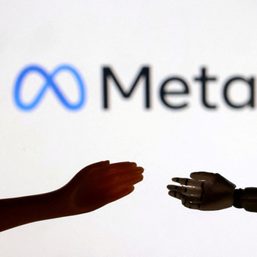SUMMARY
This is AI generated summarization, which may have errors. For context, always refer to the full article.

This article has been reposted with permission from Forbidden Stories.
Today, for the first time in the history of modern spying, we are seeing the faces of the victims of targeted cyber-surveillance. This is a worldwide scandal – a global web of surveillance whose scope is without precedent.
The attack is invisible. Once “infected,” your phone becomes your worst enemy. From within your pocket, it instantly betrays your secrets and delivers your private conversations, your personal photos, nearly everything about you. This surveillance has dramatic and in some cases even life-threatening consequences for the ordinary men and women who have been targeted for their work exposing the misdeeds of their rulers or defending the rights of their fellow citizens.
All of these individuals were targeted by states using the same spyware tool, “Pegasus,” sold by the NSO Group.
Our mission at Forbidden Stories is to pursue – collaboratively – the work of threatened, jailed or assassinated journalists. For the Pegasus Project, we investigated this new threat against press freedom for months, working alongside more than 80 journalists from 17 media organizations.
This investigation began with enormous leak of documents that Forbidden Stories and Amnesty International had access to. In this list of more than 50,000 selected as targets by clients of NSO Group, we even found the names of some of our colleagues, journalists we had worked with on past investigations.
But the scale of this scandal could only be uncovered by journalists around the world working together. By sharing access to this data with the other media organisations in the Forbidden Stories consortium, we were able to develop additional sources, collect hundreds of documents and put together the harrowing evidence of a surveillance apparatus that has been wielded ferociously against large swaths of civil society – outside of all legal restrictions.
Among the targets: human rights defenders, political opponents, lawyers, diplomats, and heads of state – not to mention almost 200 journalists from nearly two dozen countries. Some are local reporters, others renowned television anchors. Many investigate corruption and political scandals that threaten the highest levels of power. Most already face censorship and intimidation. But few of them could have imagined having been the target of such an invisible and invasive form of surveillance.
The list of journalists hacked by Pegasus is long: award-winning Azerbaijani journalist Khadija Ismayilova; reporter Szabolcs Panyi from Direkt36, an Hungarian investigative media outlet, freelance Morrocan journalist Hicham Mansouri; the director of the French investigative site Mediapart Edwy Plenel; and the founders of the Indian independent media The Wire, one of the few news organizations in the country that does not rely on money from private business entities.
For NSO Group’s government clients, Pegasus is the perfect weapon to “kill the story”. Invasive surveillance of journalists and activists is not simply an attack on those individuals – it is a way to deprive millions of citizens of independent information about their own governments. When they hack a journalist’s phone, they are able to extract the most sensitive information that it holds. What was that journalist working on? Who are their sources? Where are they stashing their documents? Who are their loved ones? What private information could be used to blackmail and defame them?
Journalists have long thought that new technologies – the armada of encrypted communications that they rely on – were their allies, critical blockades against censorship. With the existence of cyber surveillance tools as advanced as Pegasus, they have been brutally awoken to the fact that the greatest threats are hiding in the places they once thought to be the safest. The Pegasus Project poses important questions about the privatization of the surveillance industry and the lack of global safeguards for everyday citizens.
When a threat as large as this emerges, imperiling fundamental rights like the right to free speech, journalists need to come together. If one reporter is threatened or killed, another can take over and ensure that the story is not silenced. Forty-five years ago, the first collaborative journalism project was launched after the murder of Don Bolles, a journalist in Phoenix, Arizona. In 2018, Forbidden Stories coordinated the Daphne Project in the wake of the assassination of Daphne Caruana Galizia in Malta. We have continued to pursue the work of journalists who have been murdered for their work – whether that was investigating environmental scandals or tracking Mexican drug cartels – alongside dozens of news organizations.
The collaboration of journalists from around the world is without a doubt one of the best defenses against these violent attacks on global democracy. – Rappler.com
Add a comment
How does this make you feel?







![[OPINION] We should own our health](https://www.rappler.com/tachyon/2024/06/thought-leaders-we-should-own-our-health.jpg?resize=257%2C257&crop=271px%2C0px%2C720px%2C720px)

![[OPINION] A big defeat for Big Tech](https://www.rappler.com/tachyon/2024/03/big-defeat-big-tech-march-27-2024.jpg?resize=257%2C257&crop=425px%2C0px%2C1080px%2C1080px)

There are no comments yet. Add your comment to start the conversation.